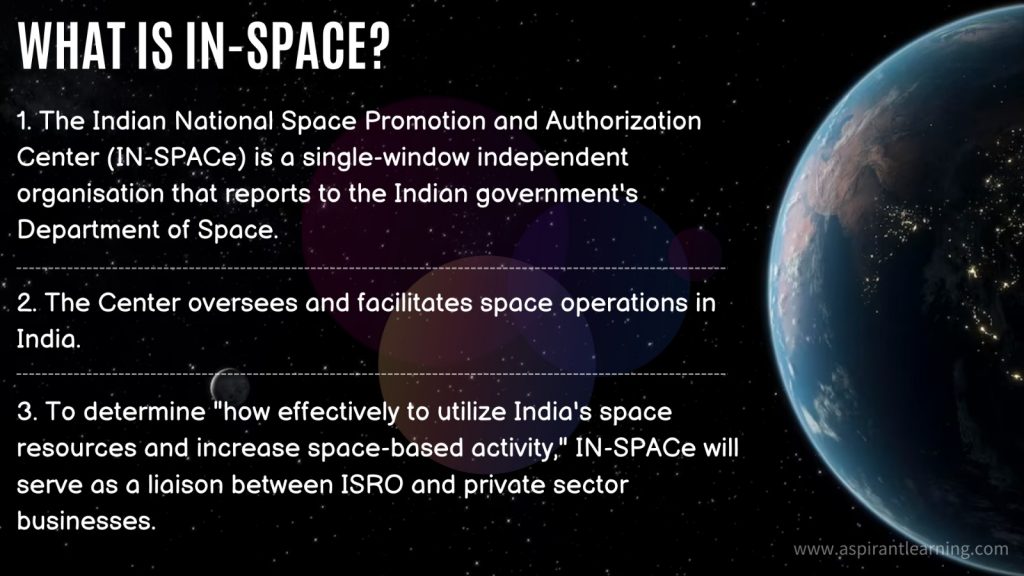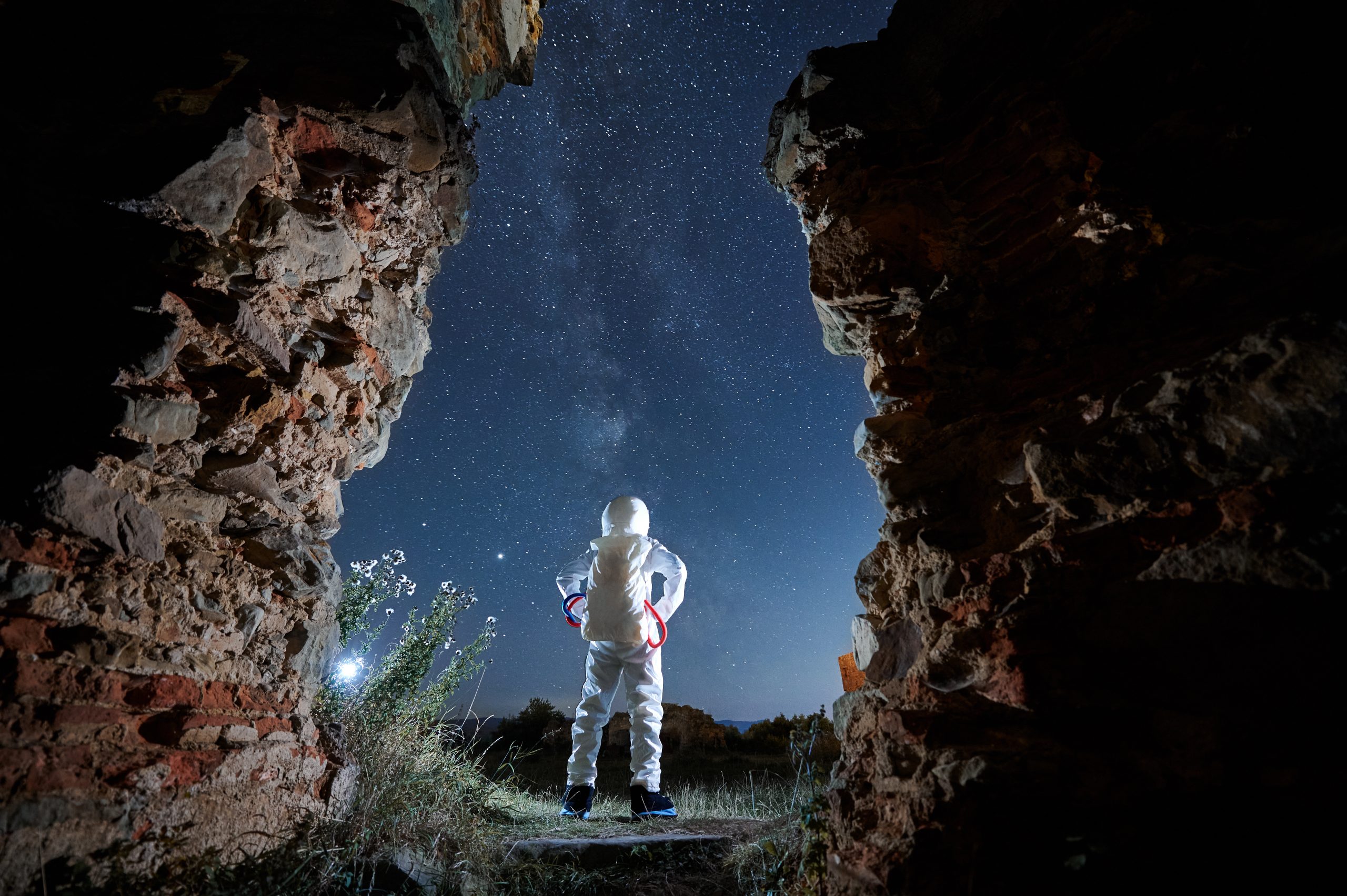News Highlights:
- ISRO plans ‘space tourism’ by 2030 at ₹6 crores per passenger.
- ISRO is likely to partner with private firms for the development of the space travel module via the Indian National Space Promotion and Authorisation Centre (IN-SPACe).
Key Takeaway:
- ISRO has not announced whether the module will include sub-orbital space travel or orbital space travel.
- The Rs 6 crore price tag suggests that the module is likely to feature sub-orbital space travel.

Space tourism:
- About:
- Space tourism is human space travel for recreational purposes.
- There are several different types of space tourism, including orbital, suborbital and lunar space tourism.
- It is another niche segment of the aviation industry that seeks to give tourists the ability to become astronauts and experience space travel for recreational, leisure, or business purposes.
- Companies including Virgin Atlantic, SpaceX, XCOR Aerospace, Jeff Bezos’s Blue Origin and Armadillo Aerospace are working on providing space tourism services to people.
Types of Space tourism:
- Suborbital Space Tourism:
- Suborbital space flights will aim to reach an altitude that will qualify as reaching space but will not achieve a full orbit.
- The spacecraft will fly at low speeds, with its trajectory intersecting the atmosphere of the surface and will fall back to the earth after the engines are shut off.
- Suborbital space tourists will reach altitudes of approximately 100 kilometres and will have a few minutes in space; they will also experience some moments of weightlessness as the spacecraft free-falls back to earth.
- Orbital Space Tourism:
- Orbital space flights will reach altitudes of over 400 kilometres, and orbital space tourists tend to spend days or even more than a week in space.
- The spacecraft will be placed on a trajectory to remain in space for at least one full orbit and should achieve the orbital velocity to remain in the orbital path.
- Due to the increased length, speed and distance, orbital space flights are significantly more expensive than suborbital space flights.
- SpaceX’s four passengers on their September 2021 orbital space flight allegedly paying $50 million per ticket.
- Lunar Space Tourism:
- Lunar space tourism aims to complete full trips to the moon with a suitable lunar spacecraft.
- While no lunar space tourism flights have yet been launched, plans to launch Lunar tourism on the moon’s surface or around it between 2023 and 2043 have been announced.
- SpaceX announced plans for the dearMoon project in 2021, the first ever lunar space tourism mission.
Advantages of Space Tourism:
- Boost the economy:
- space tourism will increase commercial activity in the time of the poor state of the world economy.
- Generate Employment:
- Space tourism will give employment to thousands of people.
- Manufacturing new and better spacecraft will give employment to many skilled people.
- Draw Investors:
- It will renew interest in space exploration.
- This will draw more investors for more financial backing to support more innovations in the industry.
- Pave ways to protect Earth:
- It would also help in identifying potential hazards dangerous for our planet.
- Technological advancement:
- Opens avenues for advanced technology that can be applied to other domains besides space missions.
- New resources:
- Help to find new minerals and other precious materials in space and on other planets.
- This will significantly help the people of Earth, where natural resources are depleting fast.
- Adventure Tourism:
- Open a new avenue for adventure tourists.
Disadvantages:
- Exposure to Sun’s Radiation:
- Space travel technology at the nascent stage can make entering space a dangerous venture.
- Space travellers are likely to get exposed to harmful radiation from the sun.
- Health:
- Spending long hours in zero gravity conditions can harm the person’s cardiovascular and musculoskeletal systems.
- If people accidentally get exposed to high-energy ionising cosmic rays, it may lead to cancer.
- Exposure to harmful organisms:
- We may unwittingly introduce some harmful microorganisms from space into the atmosphere of Earth.
- Poor Regulation:
- Lack of proper regulation and inadequate safety protocols can make space travel extremely dangerous.
- Commercialisation:
- Companies engaged in this form of travel may fail to stick to safety measures in a spree to gather more customers.
- Waste of Resources:
- Experimentation and unsuccessful ventures may cause an unnecessary waste of resources.
- Developing space programs and spacecraft need a lot of money.
- That money can be utilised for the alleviation of poverty.
- Inequity:
- Space tourism is meant for the super-rich only.
- For example, a single 2 and half hour flight ticket in Virgin Galactic’s upcoming spaceship costs $ 250,000.
- Not environment friendly:
- Several natural resources are wasted in flying fuel-guzzling rockets.
- It pollutes the atmosphere as well.
- Thus, the space program is bad for our environment.
- Not a panacea:
- It is great to imagine people walking on the surface of Mars.
- It would not be wise to consider the escape to space will help escape the earth’s problems.
- There is nowhere in the solar system where we can find an environment as congenial as that available on earth.
Conclusion:
- Once space tourism does become mainstream, it will also positively impact many socioeconomic factors on Earth: creating jobs, educating citizens about space and fostering a new solar-based energy infrastructure.
- The sweet escape to the stars can eventually awaken us to the awe-inspiring potential of space exploration while also giving us a better appreciation of home.
Pic Courtesy: Freepik
Content Source: Hindustan Times



